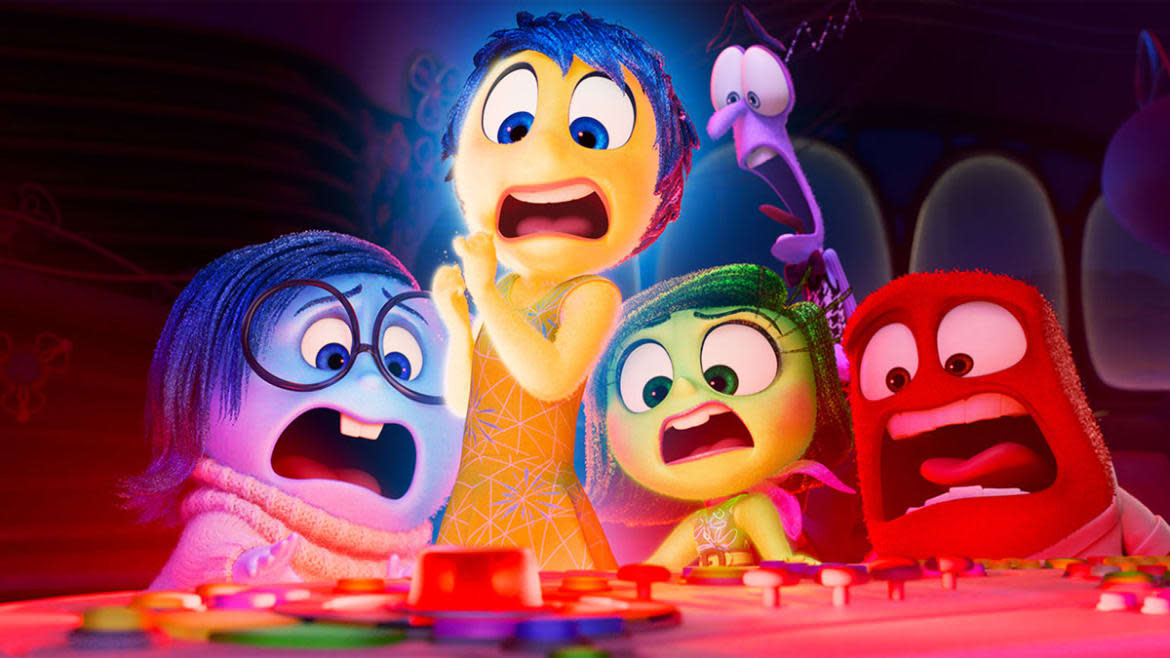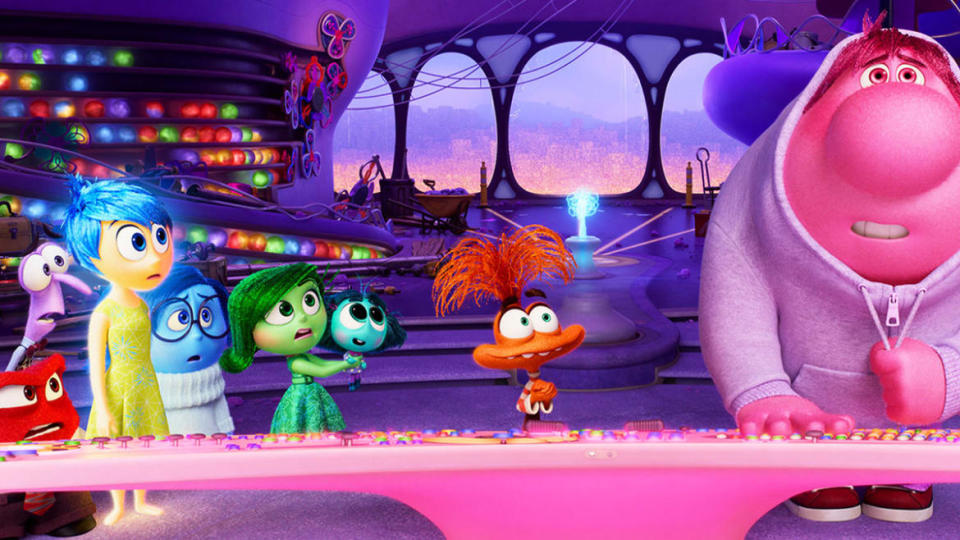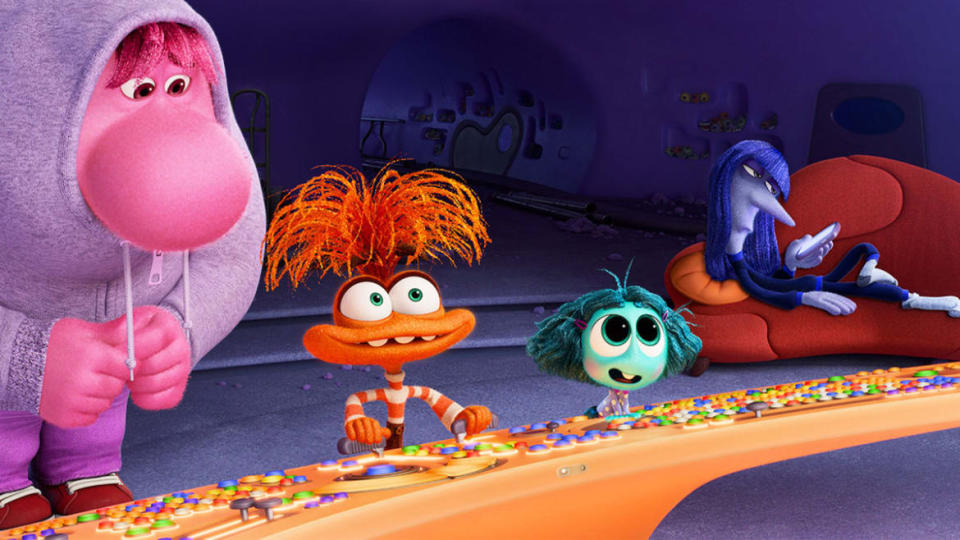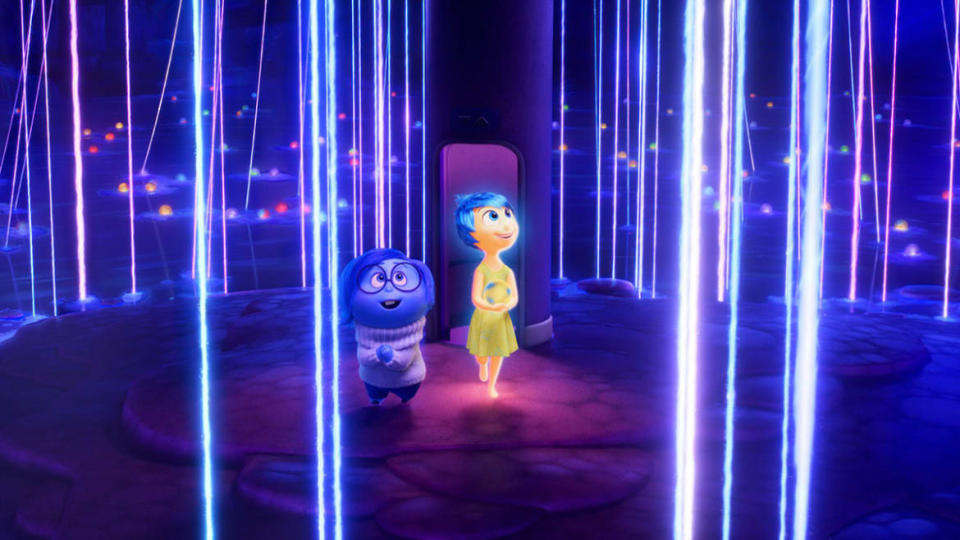‘Inside Out 2’ Is Brilliant: The Win Pixar Desperately Needs

There’s a lot riding on Inside Out 2, Pixar’s 28th feature film, which hits theaters June 14. As the sequel to a beloved, Oscar-winning movie, it arrives with high expectations from fans. But it also means a lot to Pixar’s bottom line. The venerated animation studio has suffered numerous setbacks in recent years, due to the back-to-back disappointments of Lightyear (a commercial and critical flop) and Elemental, which posted the studio’s worst-ever opening weekend, before bouncing back by the end of its theatrical run. A string of pandemic-era Disney+ exclusives performed well critically, but they left the impression that skipping the theater to watch the new Pixar movie at home is a solid option. This led to layoffs and a stated commitment to reorient the studio’s production strategy away from personal, original pictures and toward sequels and spinoffs of surefire hits—just like this one.
Animation fans and cinephiles balked at the report that Pixar was going hard on franchises and established stories, which is a reasonable reaction. The studio is beloved for its original storytelling, and cashing in on popularity is what gave us the abysmal Cars trilogy. Thankfully, the charming Inside Out 2 suggests that returning to the well of its tried-and-true may not be such a bad thing after all. It’s not just a fitting sequel; it’s one of the studio’s best films in years.
Picking up two years after the 2015 original, Inside Out 2 reintroduces us to Riley (Kensington Tallman), whose mind is home to a bundle of emotions: Joy (Amy Poehler), Sadness (Phyllis Smith), Anger (Lewis Black), Fear, and Disgust (Tony Hale and Liza Lapira, replacing BIll Hader and Mindy Kaling). The group steers Riley’s development, determining her emotional reactions, saving her best, most important memories, and binning the bad ones. (Just as her feelings are sentient, so too are her memories, personality traits, and beliefs.) This is all in service of Riley developing a sense of self, which Joy proudly notes is well-established. Riley is a good person, and she knows it.
But now that Riley has turned 13, an alarm goes off in her head: It’s puberty time. This introduces a new, wilier group of feelings, who abruptly move into Riley’s emotional headquarters. Led by Anxiety (Maya Hawke), Riley’s new teen emotions also include Embarrassment (Paul Walter Hauser), Envy (Ayo Edebiri), and Ennui (Adèle Exarchopoulos). While de facto leader Joy cheerfully tries to be amenable to the new housemates, Anxiety quickly takes control. Riley’s childish feelings are too simplistic, she argues, and it’s time for her to develop complexity. But to do that, the emotions that guided Riley for the first 12 years of her life have got to go—so Anxiety kicks them out and locks them away.

Anger, Fear, Joy, Sadness, Disgust, Envy, Anxiety, and Embarrassment
This sets Joy, Anger, Fear, and Disgust on an adventure to get home and restore Riley’s sense of self, which Anxiety chucked far off into the back of Riley’s mind. Meanwhile, Sadness infiltrates the mainframe, where Anxiety and Envy are intent on rewriting Riley into a, well, anxious and envious teen. (Ennui, understandably and hilariously, can’t care enough to participate unless the moment truly calls for it, while Embarrassment mostly hides inside his hoodie.) This plays out while Riley attends a hockey camp, where she tries to get in with a group of older girls at the expense of her relationship with her two best friends.
‘Bad Boys: Ride or Die’ Should Be Martin Lawrence’s Oscar Moment
The general plot of Joy running into mishap after mishap as she tries to return to Riley’s mind sounds nearly identical to that of Inside Out. But the introduction of new emotions adds a reliably fun and engaging twist. What these films do so well is take such a universal experience and literalize it, in such a way that feels at once obvious and exciting to see play out. It’s a blast to watch Anxiety and co. take the reins for Riley, messily instructing her to play it cool in front of her new friends and failing spectacularly. Just like the emotions that guide her, Riley is wildly expressive, creating a lot of visual humor out of simple-yet-relatable awkward situations.

Embarrassment, Anxiety, Envy, and Ennui
First-time director Kelsey Mann, who previously worked as a storyboard artist, deserves a lot of the credit here. She demonstrates a strong understanding of how to translate broadly defined emotions into snappy, surprising animation. This bears out in even the smallest ways, like when we see that Riley’s family-oriented “personality island”—the manifestations of her core traits—is now dwarfed by the one dedicated to her friendships. The thoughtful visuals transform what could have been superficial storytelling into something special.
‘Hit Man’ Has the Best Movie Scene of the Year (So Far)
Meanwhile, Joy and her crew’s adventure takes us to some witty, inspired locations, like the vault of Riley’s secrets and the sar-chasm, which interrupts the literal stream of consciousness that they use to travel through Riley’s mind. Both of these provide for some of the movie’s biggest laughs; the vault of Riley’s secrets, in particular, features some laugh-out-loud, mixed-media animation that I dare not spoil. Even if the general idea of the inner workings of our minds coming to life isn’t as fresh, the new expressions that Mann and co-writers Meg LeFauvre and Dave Holstein came up with are consistently entertaining.

Sadness and Joy
Some viewers may find the story of Riley coming to terms with her burgeoning teen self more superficial than that of another recent Pixar film, however. 2021’s Turning Red followed a similar premise—exploring female coming-of-age through a boisterous metaphor—and turned it into something intimate, textured, and wholly original. Compared to Turning Red heroine Mei dealing with a family curse that turns her into a red panda when she gets emotional, Riley’s hockey camp drama feels like lower-stakes, or at least less novel, storytelling. It’s certainly not as poignant as what she goes through in the first movie, in which her family uprooted across the country and the preteen had to start her life anew.
Still, Inside Out 2 maintains its predecessor’s sincerity, which is its best and most rewarding trait. Thanks to its stellar animation, some great gags, and unique twists on one of Pixar’s smartest concepts, the film should be a memory that audiences find worth keeping in their minds’ headquarters. And with any luck, it will earn enough success to assuage Pixar’s own anxieties.
Get the Daily Beast's biggest scoops and scandals delivered right to your inbox. Sign up now.
Stay informed and gain unlimited access to the Daily Beast's unmatched reporting. Subscribe now.


